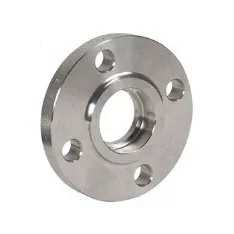-
Cangzhou Yulong Steel Co., Ltd.
-
Phone:
+86 13303177267 -
Email:
admin@ylsteelfittings.com
- English
- Arabic
- Italian
- Spanish
- Portuguese
- German
- kazakh
- Persian
- Greek
- French
- Russian
- Polish
- Thai
- Indonesian
- Vietnamese
- Zulu
- Korean
- Uzbek
- Hindi
- Serbian
- Malay
- Ukrainian
- Gujarati
- Haitian Creole
- hausa
- hawaiian
- Hebrew
- Miao
- Hungarian
- Icelandic
- igbo
- irish
- Japanese
- Javanese
- Kannada
- Khmer
- Rwandese
- Afrikaans
- Albanian
- Amharic
- Armenian
- Azerbaijani
- Basque
- Belarusian
- Bengali
- Bosnian
- Bulgarian
- Catalan
- Cebuano
- China
- China (Taiwan)
- Corsican
- Croatian
- Czech
- Danish
- Esperanto
- Estonian
- Finnish
- Frisian
- Galician
- Georgian
- Kurdish
- Kyrgyz
- Lao
- Latin
- Latvian
- Lithuanian
- Luxembourgish
- Macedonian
- Malgashi
- Malayalam
- Maltese
- Maori
- Marathi
- Mongolian
- Myanmar
- Nepali
- Norwegian
- Norwegian
- Occitan
- Pashto
- Dutch
- Punjabi
- Romanian
- Samoan
- Scottish Gaelic
- Sesotho
- Shona
- Sindhi
- Sinhala
- Slovak
- Slovenian
- Somali
- Sundanese
- Swahili
- Swedish
- Tagalog
- Tajik
- Tamil
- Tatar
- Telugu
- Turkish
- Turkmen
- Urdu
- Uighur
- Welsh
- Bantu
- Yiddish
- Yoruba

Dec . 20, 2024 11:53 Back to list
carbon steel buttweld fittings
Understanding Carbon Steel Buttweld Fittings
In the world of industrial piping systems, the choice of components plays a crucial role in ensuring the efficiency, safety, and longevity of the installations. One essential element in this landscape is the carbon steel buttweld fitting. These fittings, known for their reliability and strength, are widely used in various applications across different industries.
What are Carbon Steel Buttweld Fittings?
Carbon steel buttweld fittings are pipe fittings made from carbon steel that are designed to be welded to the ends of pipes. They are characterized by their smooth, continuous transition between the pipe and fitting, which minimizes turbulence and pressure loss within the system. This design is particularly important in applications where maintaining flow efficiency is critical.
These fittings come in various types, including elbows, tees, reducers, caps, and crosses. Each type serves a unique function in directing the flow of fluids or gases through a piping system. For example, elbows are used to change the direction of flow, while tees are utilized to create branches in a piping line.
Properties of Carbon Steel
Carbon steel, the material from which these fittings are made, is an alloy primarily composed of carbon and iron. Its properties make it an ideal choice for a variety of applications. The primary advantages of carbon steel include
1. Strength and Durability Carbon steel has high tensile strength and can withstand substantial weight and pressure. This makes it suitable for high-pressure applications.
2. Weldability The buttweld design allows for seamless connections, and carbon steel can be easily welded to itself and to other materials, providing structural integrity.
3. Resistance to Impact Carbon steel fittings can absorb impacts, making them effective in environments where mechanical stress is common.
4. Cost-Effectiveness Compared to other materials such as stainless steel and alloy fittings, carbon steel is generally more affordable, making it an attractive option for businesses looking to manage costs.
Applications of Carbon Steel Buttweld Fittings
Because of their properties, carbon steel buttweld fittings are extensively used in various industries. Some of the most common applications include
carbon steel buttweld fittings

- Oil and Gas In the exploration and transportation of oil and gas, robust fittings are critical to ensure safety and efficiency
. Carbon steel fittings can handle extreme pressure and temperature, making them suitable for this environment.- Chemical Processing Many chemicals corrode materials easily, so choosing the right type of steel is vital. Carbon steel, often with specific coatings or treatments, is employed in transporting chemicals safely.
- Water Supply and Waste Management In municipal and hydraulic systems, these fittings are essential in connecting pipes in water distribution networks and waste management systems.
- Power Generation In power plants, whether fossil fuel-based or nuclear, carbon steel fittings facilitate the movement of fluids and gases under high pressure and temperature, maintaining system integrity.
Maintenance and Care
While carbon steel buttweld fittings are durable, they are not immune to corrosion, especially in reactive environments. Regular inspection and maintenance are essential to ensure the longevity of the fittings. Here are a few tips
1. Regular Inspection Check for signs of wear and tear, including rust or pitting, which may indicate compromised integrity.
2. Protective Coatings Applying a suitable coating can significantly enhance the corrosion resistance of carbon steel fittings.
3. Control Environment Where possible, controlling the environment in which the fittings operate can mitigate oxidation and other forms of corrosion.
4. Proper Installation Ensuring that fittings are installed correctly can prevent unnecessary stress and damage.
Conclusion
Carbon steel buttweld fittings are a vital component in the infrastructure of many industries. Their strength, durability, and cost-effectiveness make them a preferred choice across various applications, from oil and gas to power generation. Understanding their features, applications, and maintenance needs is crucial for professionals in the field. By investing in quality fittings and implementing proper care and maintenance practices, industries can ensure efficient operations and extend the life of their piping systems.
Latest news
-
ANSI 150P SS304 SO FLANGE
NewsFeb.14,2025
-
ASTM A333GR6 STEEL PIPE
NewsJan.20,2025
-
ANSI B16.5 WELDING NECK FLANGE
NewsJan.15,2026
-
ANSI B16.5 SLIP-ON FLANGE
NewsApr.19,2024
-
SABS 1123 FLANGE
NewsJan.15,2025
-
DIN86044 PLATE FLANGE
NewsApr.19,2024
-
DIN2527 BLIND FLANGE
NewsApr.12,2024
-
JIS B2311 Butt-Welding Fittings LR/SR 45°/90° /180°Seamless/Weld
NewsApr.23,2024











